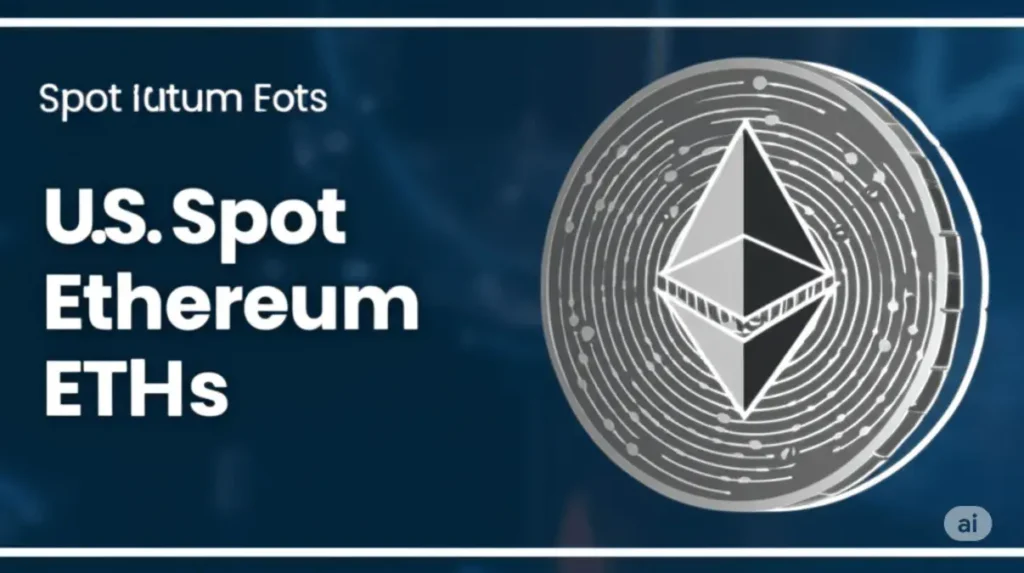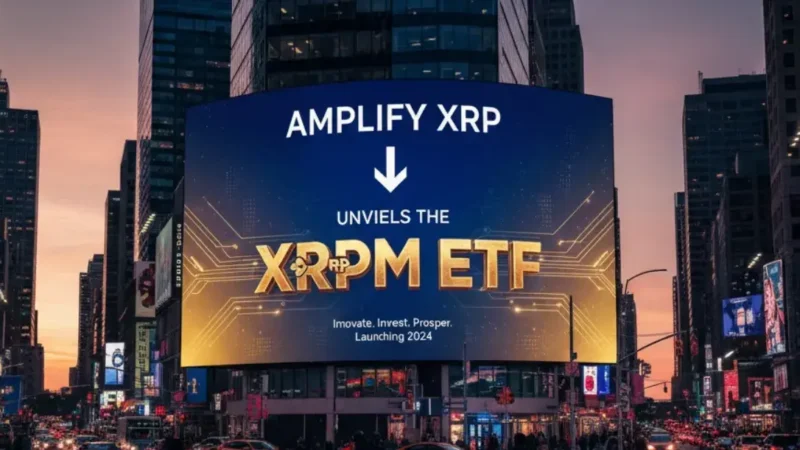U.S. Spot Ethereum ETFs Surge Past $4 Billion in Inflows: A New Era for Digital Assets

The landscape of traditional finance is rapidly evolving, with digital assets carving out an increasingly significant niche. A pivotal moment in this ongoing integration has been reached: U.S. spot Ethereum ETFs have collectively pulled in over $4 billion in net inflows since their launch on July 23, 2024. This remarkable achievement, hitting the milestone in under a year with a $100.7 million surge on June 23, underscores a growing institutional appetite for Ethereum’s on-chain promise, even amid broader geopolitical uncertainties.
Rapid Ascent to the $4 Billion Mark
Eleven months into their existence, spot Ethereum ETFs have demonstrated an impressive capacity to attract capital. Crossing the $4 billion threshold on June 23, these funds benefited from a combined $100.7 million in daily inflows, marking the strongest single-day reception in about a week. This robust influx brings the cumulative tally just shy of the first anniversary, highlighting the consistent demand for these investment vehicles.
The total trading volume for the suite of U.S. spot Ethereum ETFs now stands near an impressive $89 billion. Despite a peak of over $1.5 billion in average daily flows earlier in the year, the current average daily flows continue to hover around a healthy $840 million, indicating sustained engagement from investors. This consistent volume speaks to the liquidity and accessibility these ETFs provide to those looking to gain exposure to Ethereum without directly holding the cryptocurrency.
Fidelity’s FETH Takes Center Stage in the Inflow Race
While several players have entered the market, Fidelity‘s FETH has emerged as a frontrunner in attracting new capital. On June 23, the day of the significant $100.7 million surge, Fidelity’s FETH led all entrants with a commanding $60.5 million in fresh capital. This performance outpaced BlackRock’s ETHA fund, which, despite often being a dominant force, recorded $25.8 million on the same day.
The strong showing from newer fund structures like FETH signals a discernible shift in investor preference. There’s a growing inclination towards lower-fee, spot-backed Ethereum ETFs, as opposed to legacy trusts that often come with higher expense ratios. This trend suggests that investors are becoming more discerning, prioritizing cost-efficiency and direct exposure to the underlying asset. Even Grayscale’s mini-ETF products have chipped in healthy sums, with its converted ETHE fund bringing in $9 million and the legacy ETH product adding $5.4 million on that impactful day. The combined efforts of these diverse offerings are propelling the overall growth of the spot Ethereum ETFs market.
Grayscale’s Outflows Reshape Market Share Dynamics
While the overall narrative for spot Ethereum ETFs is one of significant growth, it’s crucial to acknowledge the dynamic shifts within the market, particularly concerning Grayscale’s ETHE fund. Since converting to an ETF, Grayscale’s higher-fee ETHE fund has experienced substantial net outflows, totaling $4.3 billion. This considerable outflow means that, absent these shifts, the cumulative net inflows into spot Ethereum ETFs would actually be over $8.3 billion, highlighting the considerable repositioning of capital within the market.
As a direct consequence of these outflows, ETHE’s once-dominant slice of the Ethereum-ETF pie has shrunk dramatically. At launch, Grayscale commanded nearly 90 percent of the market share. Today, that share has dwindled to approximately 30 percent. This shift has allowed other players to gain significant ground. Currently, BlackRock’s ETHA manages approximately 32 percent of total assets, making it the largest holder. Fidelity’s FETH, rapidly gaining traction due to its competitive fee structure and strong inflows, now accounts for about 18 percent, while Grayscale’s remaining legacy ETH funds hold about 15.5 percent. These changing market share dynamics underscore the competitive nature of the spot Ethereum ETFs landscape and the impact of fee structures on investor choice.
Ether vs. Bitcoin ETFs: A Still-Evolving Narrative
To put the performance of spot Ethereum ETFs into perspective, a comparison with their Bitcoin counterparts is essential. U.S. spot Bitcoin ETFs, which launched earlier, have amassed approximately $47.3 billion in inflows during the same period. In their first eleven months, Bitcoin ETFs had already attracted around $34.7 billion. On June 23, the same day spot Ethereum ETFs saw their significant surge, Bitcoin’s ETF suite also experienced robust inflows of $350.8 million, led by BlackRock’s IBIT, extending a ten-day inflow streak.
This comparison highlights that while spot Ethereum ETFs have undeniably achieved impressive growth in a relatively short period, they are still playing catch-up to the more established Bitcoin ETF market. Bitcoin, as the pioneer cryptocurrency, benefits from greater historical recognition and a larger institutional comfort level. However, Ethereum’s utility as a platform for decentralized applications, smart contracts, and the broader DeFi ecosystem provides a compelling long-term investment thesis that continues to attract new capital. The ongoing narrative between these two digital asset classes will be fascinating to watch as institutional adoption of cryptocurrencies continues to mature.
The journey of spot Ethereum ETFs to $4 billion in net inflows in less than a year is a significant indicator of the evolving landscape of digital asset investment. It demonstrates a growing recognition of Ethereum’s fundamental value and its potential to reshape various industries through its blockchain technology. The continued strong daily flows and the shift towards low-fee, spot-backed products suggest that this trend is likely to persist.
As more traditional investors seek regulated and accessible pathways to digital assets, the role of spot Ethereum ETFs will only become more pronounced. The competition among issuers, the ongoing education of investors about the distinct value propositions of Ethereum versus Bitcoin, and the broader regulatory environment will all contribute to shaping the future trajectory of these products. This milestone is not just a number; it represents a deepening integration of cryptocurrency into mainstream finance, paving the way for further innovation and adoption in the digital economy. The rapid ascent of spot Ethereum ETFs is a clear signal that the institutional embrace of digital assets is not merely a fleeting trend, but a foundational shift with lasting implications. The market’s response to these products, characterized by significant inflows and strategic reallocations, reaffirms the growing confidence in Ethereum’s long-term potential.
The sustained interest, even in the face of geopolitical uncertainties, highlights the perceived resilience and transformative potential of the underlying asset. As the first anniversary approaches, the momentum behind spot Ethereum ETFs suggests a bullish outlook for their continued growth and their role in bridging the gap between traditional finance and the decentralized future. The evolution of this market, particularly the competition and shifting market shares among the various spot Ethereum ETFs, provides valuable insights into investor preferences and the maturation of the digital asset investment space.
The robust performance of spot Ethereum ETFs is not just about the numbers; it’s about the increasing legitimization of Ethereum as a viable, investable asset class for a wide range of investors. This growing acceptance is crucial for the broader cryptocurrency ecosystem, as it opens doors for more capital, more innovation, and greater mainstream integration. The comparison with Bitcoin ETFs further illustrates the distinct yet complementary roles these two major cryptocurrencies play in the digital asset landscape. While Bitcoin often serves as a primary entry point, Ethereum’s technological advancements and diverse applications make it an increasingly attractive option for those seeking exposure to the broader decentralized economy. The ongoing narrative between these two powerhouses will continue to shape the future of crypto investment.
Stay informed, read the latest crypto news in real time!
Ultimately, the over $4 billion in net inflows into U.S. spot Ethereum ETFs is a testament to the strong belief in Ethereum’s future, its utility, and its potential to revolutionize various sectors through its smart contract capabilities. This milestone marks a significant step forward in the institutional adoption of digital assets and portends a future where cryptocurrency investments are increasingly commonplace in diversified portfolios.





One thought on “U.S. Spot Ethereum ETFs Surge Past $4 Billion in Inflows: A New Era for Digital Assets”